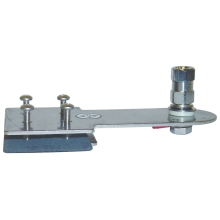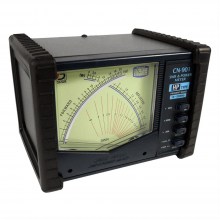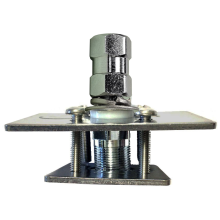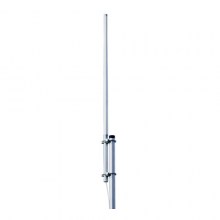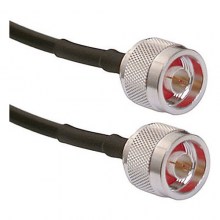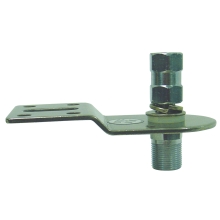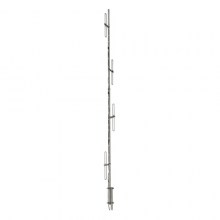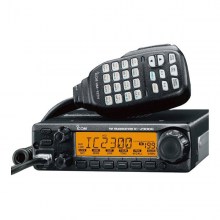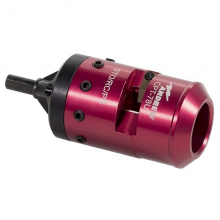Welcome to our Two Way Radio Tutorial. I'll try to make this as quick and "no brainer" as possible.
Two Way 101:
A two-way radio is a radio that can both transmit and receive (transceiver). A two-way radio (transceiver) allows the operator to have a conversation with other similar radios operating on the same radio frequency (channel). Two-way radios are available in mobile, base and hand-held portable configurations. Two-way radio systems usually operate in a half-duplex mode; that is, the operator can talk, or he can listen, but not at the same time (in other words, you push the button to talk, you release it to listen). A push-to-talk or Press To Transmit button activates the transmitter; when it is released the receiver is active. A mobile phone or cellular telephone is an example of a two-way radio that both transmits and receives at the same time (called full-duplex mode). It uses two different radio frequencies (channels) to carry the two directions of the conversation simultaneously.
Ok now that we have the boring technical jargon out of the way, let's get to the meat of the matter - "which radio do I need"? I'm glad you asked...let's examine the fundamentals and then take a look at some examples of two way radios.
(1) Before choosing a two way radio one must consider his or hers needs. First, are you buying a radio to join an existing talk group? If so, the first thing you need to know is what frequency (or frequencies) does this talk group currently use? If you don't have an existing talk group and you are starting a new talk group than you need to ask yourself; "do I want VHF or UHF radios"?
<NOTE> Before we go any further please understand this...it is NOT against the law to purchase any two way radio equipment. You are NOT obligated to be licensed in any way nor do you need any written authorization to purchase ANY two way radio equipment that we offer on our website. Knowing this you will still need to know which two way radio suits you the best for your particular situation. Please continue reading so we can try to help you decide.
(2) If you know the frequencies you need to talk on then making that choice is pretty straight forward. For VHF your frequency might look like: 152.2500. Land mobile commercial VHF radios have an operating range of 136-174 MHz so in this case you need VHF equipment. However if the frequency you need to operate on is for example: 452.2500 than you would need UHF equipment. Land mobile commercial UHF radios have an operating range of 380-470, 400-470 or 450-512 MHz depending on your needs.
(3) If you are starting a new talk group and have not decided on which equipment to go with, here are some helpful tips in picking either VHF or UHF:
<Note> Once you decide on what type of radio VHF or UHF you want, next you'll want to visit our antenna tutorial so you can make the right antenna choice!
VHF versus UHF:
The most common two-way radio systems operate in the VHF and UHF parts of the radio spectrum. The VHF range is 136-174 MHz while the UHF range covers 380-520 MHz. Both VHF and UHF radios are FM (frequency modulation), while CB (citizens band) radios are AM (amplitude modulation). FM radios are much clearer and have a more reliable range than do AM radios such as a CB. UHF has a shorter wavelength which makes it easier for the signal to find its way through walls or the insides of a building. VHF has a longer wavelength which means it can transmit further outdoors under ideal conditions. For most applications, lower radio frequencies are better for longer range. If an application requires working mostly outdoors, a VHF radio is probably the best choice, especially if a base station radio is used and an external antenna is added. Basic rule of thumb for either VHF or UHF is, the higher the antenna is placed, the further the radio can transmit and receive. One exception to using a VHF radio outdoors is if it is used it in a heavily wooded or rugged area. Under these conditions a UHF radio may be able to transmit better though the terrain (unless the VHF antenna is raised above the terrain). If the radios are used mainly inside buildings, then UHF is the best solution since its shorter wavelength travels through the building better.
So basically it boils down to this:
- If you operate primarily outdoors, go with VHF. If you operate primarily indoors, go with UHF.
- If cost is a factor, typically VHF radios and antennas are a little less expensive than UHF radios.
<Note> Once you decide on what type of radio VHF or UHF you want, next you'll want to visit our antenna tutorial so you can make the right antenna choice!
Analog or Digital?
Another factor to consider is whether one requires an analog or digital radio. For the most part, if you are saying to yourself; "what is digital"? than odds are you don't need it. Digital radios are primarily used in Public Service and in some cases the business world. Digital radios are much more expensive than traditional analog radios but offer some unique features that the public service and business communities require. There is APCO P25 digital which is standard for all public service organizations. Then there is IDAS digital which is unique to ICOM products and is a much more affordable alternative to P25 radios. Vertex also offers an alternative to P25 digital. In a nutshell, unless you know that you need digital or P25 equipment than odds are you don't need it. If you are looking for basic two way communications and don't want to spend a small fortune just stick with traditional analog radios; which is the majority of what we sell on the website. If it's a P25 or digital radio it will be duly noted in the description.
Range:
The useful direct range of a two-way radio system depends on radio propagation conditions, which are a function of frequency, antenna height and characteristics, atmospheric noise, reflection and refraction within the atmosphere, transmitter power and receiver sensitivity, and required signal-to-noise ratio for the chosen modulation method. An engineered two-way radio system will calculate the coverage of any given base station with an estimate of the reliability of the communication at that range. Two-way systems operating in the VHF and UHF bands, where many land mobile systems operate, rely on line-of-sight propagation for the reliable coverage area. The "shadowing" effect of tall buildings may block reception in areas within the line-of-sight range which can be achieved in open countryside free of obstructions. The approximate line-of-sight distance to the radio horizon can be estimated from : horizon in kilometers = 3.569 times the square root of the antenna height in meters. There are other factors that affect the range of a two-way radio such as weather, exact frequency used, and obstructions.
There are also repeater systems that can be installed that relay a signal to increase the communication distance. Example of how a repeater works:
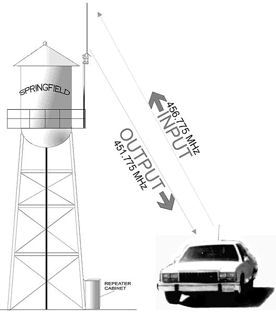 (Note): Repeater operation is a basic feature built into every two way radio we sell (with the exception of marine and aviation radios). You will still need a repeater, a duplexer, antenna and coaxial cable to set up such a system.
(Note): Repeater operation is a basic feature built into every two way radio we sell (with the exception of marine and aviation radios). You will still need a repeater, a duplexer, antenna and coaxial cable to set up such a system.
Marine or Aviation Radios?
If you are marine based or need a radio for aviation purposes, than you need a marine or aviation radio. Note Marine radios are FM radios and operate in the VHF spectrum between 155 and 160 MHz. Aviation radios operate between 118 and 136 MHz and are AM modulation. While High Frequency Transceivers operate in all modes (FM, AM, SSB, CW, RTTY) below 30MHz.
Ok, that's about as simple as I can make it. If you are still unsure of what you need or have any questions please feel free to email us.
Advanced Knowledge:
Simplex:
Simplex channel systems use a single channel for transmit and receive. This is typical of aircraft VHF AM and marine radios. Simplex systems are often legacy systems that have existed for years or decades. The architecture allows old radios to work with new ones in a single network. In the case of all ships worldwide or all aircraft worldwide, the large number of radios installed, (the installed base,) can take decades to upgrade. Simplex systems often use open architectures that allow any radio meeting basic standards to be compatible with the entire system.
Advantage: as the simplest system configuration, there is reliability since only two radios are needed to establish communication between them, without any other infrastructure.
Disadvantages: The simplex configuration offers communication over the shortest range or distance because mobile units must be in effective range of each other. The available channel bandwidth limits the number of simultaneous conversations, since "dead" air time cannot be easily used for additional communication.
Duplex:
Duplex means two channels are used: one in each direction.
Duplex channel systems transmit and receive on different discrete channels. This defines systems where equipment cannot communicate without some infrastructure such as a repeater, base station or Talk-Through Base. Most common in the US is a repeater configuration where a base station is configured to re-transmit the audio received from mobile units. This makes the mobiles, or hand-helds, able to communicate amongst one another anywhere within reception range of the base station or repeater. Typically the base or repeater station has a high antenna, which allows greater range, compared with a ground vehicle or hand-held transceiver.
Duplex systems can be divided into two types. The term half-duplex refers to systems where use of a push-to-talk switch is required to communicate. Full duplex refers to systems like mobile telephones with a capability to simultaneously receive and transmit.
Advantage: duplex channels usually allow repeater operation which extends range (in most cases due to increased transmit power and improved aerial location / height) - especially where hand-held radios are in use.
Disadvantage: If a radio cannot reach the repeater, it cannot communicate.
Hybrid simplex/duplex:
Some systems use a mix of the two where radios use duplex as a default but can communicate simplex on the base station channel if out-of-range.[5] In the US, the capability to talk simplex on a duplex channel with a repeater is sometimes called talk-around, direct, or car-to-car.
Types:
Two-way radio systems can be classified in several ways depending on their attributes.
Conventional versus Trunked:
Conventional:
Conventional radios operate on fixed RF channels. In the case of radios with multiple channels, they operate on one channel at a time. The proper channel is selected by a user. The user operates a channel selector or buttons on the radio control panel to pick the channel.
In multi-channel systems, channels are used for separate purposes.[3] A channel may be reserved for a specific function or for a geographic area. In a functional channel system, one channel may allow City of Springfield road repair crews to talk to the City of Springfield's road maintenance office. A second channel may allow road repair crews to communicate with state highway department crews. In a geographic system, a taxi company may use one channel to communicate in the Boston, Massachusetts area and a second channel when taxis are in Providence, Rhode Island. In marine radio operations, one channel is used as an emergency and calling channel, so that stations may make contact then move to a separate working channel for continued communication.
Motorola uses the term mode to refer to channels on some conventional two-way radio models. In this use, a mode consists of a radio frequency channel and all channel-dependent options such as selective calling.
Scanning in conventional radios:
Some conventional radios scan more than one channel. That is, the receiver searches more than one channel for a valid transmission. A valid transmission may be a radio channel with any signal or a combination of a radio channel with a specific CTCSS (or Selective calling) code.
There are a wide variety of scan configurations which vary from one system to another. Some radios have scan features that receive the primary selected channel at full volume and other channels in a scan list at reduced volume. This helps the user distinguish between the primary channel and others without looking at the radio control panel. An overview:
A scanning feature can be defined and preset: when in scanning mode, a predetermined set of channels is scanned. Channels are not changeable by the radio user.
Some radios allow an option for user-selected scan: this allows either lockout of pre-selected channels or adding channels to a scan list by the operator. The radio may revert to a default scan list each time it is powered off or may permanently store the most recent changes.
In professional radios, scan features are programmable and have many options. Scan features can affect system latency. If the radio has a twenty channel scan list and some channels have CTCSS, it can take several seconds to search the entire list. The radio must stop on each channel with a signal and check for a valid CTCSS before resuming scanning. This can cause missed messages.
For this reason, scan features are either not used or scan lists are intentionally kept short in emergency applications. Part of APCO Project 16 set standards for channel access times and delays caused by system overhead. Scan features can further increase these delays. One study said delays of longer than 0.4 seconds (400 milliseconds) in emergency services are not recommended.[4] No delay from user push-to-talk until the user's voice is heard in the radio's speaker is an unattainable ideal.
Trunked:
In a trunked radio system, the system logic automatically picks the physical radio frequency channel. There is a protocol that defines a relationship between the radios and the radio backbone which supports them. The protocol allows channel assignments to happen automatically.
Digital trunked systems may carry simultaneous conversations on one physical channel. In the case of a digital trunked radio system, the system also manages time slots on a single physical channel. The function of carrying simultaneous conversations over a single channel is called multiplexing.
Instead of channels, radios are related by groups which may be called, groups, talk groups, or divided into a hierarchy such as fleet and subfleet, or agency-fleet-subfleet. These can be thought of as virtual channels which appear and disappear as conversations occur.
Systems make arrangements for handshaking and connections between radios by one of these two methods:
A computer assigns channels over a dedicated control channel. The control channel sends a continual data stream. All radios in the system monitor the data stream until commanded by the computer to join a conversation on an assigned channel.
Electronics embedded in each radio communicate using a protocol of tones or data in order to establish a conversation, (scan-based).
If all physical channels are busy, some systems include a protocol to queue or stack pending requests until a channel becomes available.
Some trunked radios scan more than one talk group or agency-fleet-subfleet.
Visual clues a radio may be trunked include the 1) lack of a squelch knob or adjustment, 2) no monitor button or switch, and 3) a chirp (made infamous by Nextel) showing the channel is available and ready at the moment the push-to-talk is pressed.
Project 25 (APCO P25 Digital):
Project 25 (P25 or APCO-25) is a suite of standards for digital radio communications for use by federal, state/province and local public safety agencies in North America to enable them to communicate with other agencies and mutual aid response teams in emergencies. In this regard, P25 fills the same role as the European Terrestrial Trunked Radio (TETRA) protocol, although not interoperable with it. Public safety radios have been upgraded from analog to digital since the 1990s because of the limitations of analog transmission, and also because of the technological advances and expanded capabilities of digital radio.
Varying user protocols and different public safety radio spectrum, made it difficult for Public Safety to achieve interoperability and widespread acceptance among the public safety agencies. However, the lessons learned during the disasters that the United States faced in the past decade, have forced agencies to assess their requirements during a disaster when the basic infrastructure is in a state of failure. To meet the growing demands of public safety digital radio communications, the United States Federal Communications Commission (FCC) at the directive of the United States Congress initiated an inquiry in 1988, to receive recommendations from users and manufacturers to improve the communication systems in existence. Based on the recommendations, in October 1989 APCO Project 25 came into existence in a coalition with the Association of Public-Safety Communications Officials-International (APCO), the National Association of State Telecommunications Directors (NASTD), the National Telecommunications and Information Administration (NTIA), the National Communications System (NCS), the National Security Agency (NSA) and the Department of Defense (DoD), to find solutions that best serve the needs of public safety management. In addition, a steering committee consisting of representatives from the above mentioned agencies along with FPIC (Department of Homeland Security Federal Partnership for Interoperable Communication), Coast Guard and the Department of Commerce's National Institute of Standards and Technology (NIST), Office of Law Enforcement Standards was established to decide the priorities and scope of technical development of P25.



